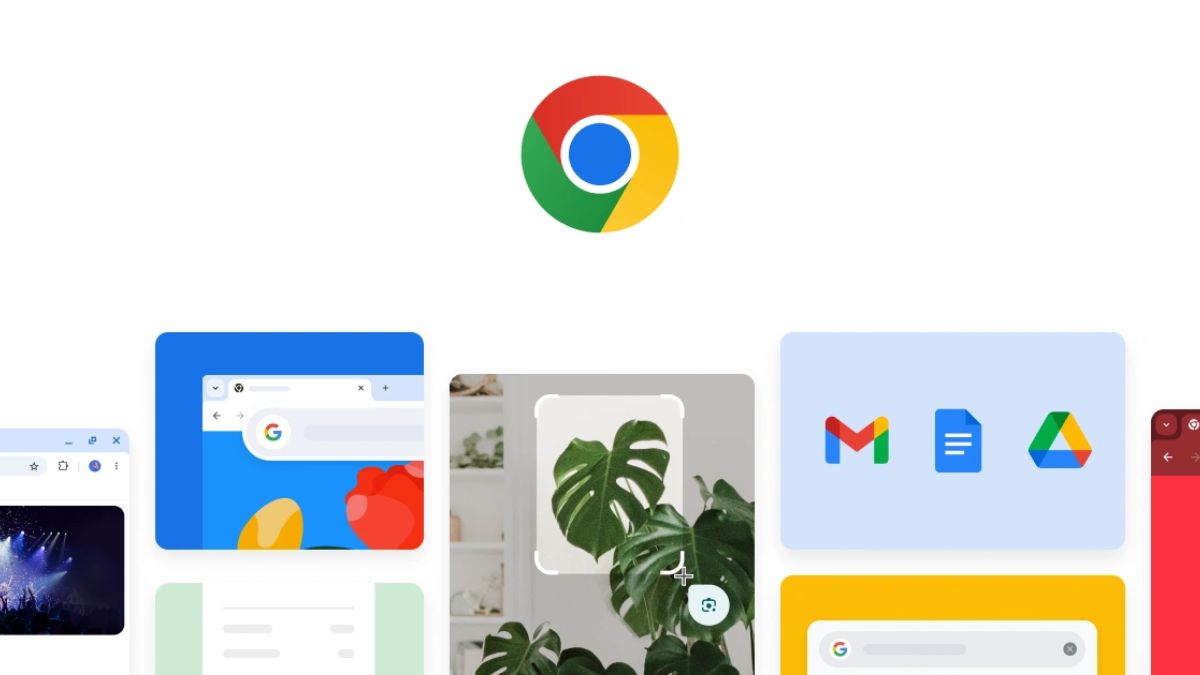TOPIC
Gun Classes in Maryland: Essential Training for Safe Firearm Handling

Maryland requires specific training for handgun purchases and carry permits. These gun classes offer essential training for firearm safety and responsible ownership, vital knowledge about state and federal gun laws, proper handling techniques, and safe storage practices.
Fortress Training and other approved facilities offer courses tailored to meet state requirements. These include the Handgun Qualification License (HQL) training, which is mandatory for handgun purchases. The HQL course covers firearm laws, safety, and hands-on practice. For those seeking a Wear and Carry Permit, additional training is required.
Many training centers in Maryland also provide advanced classes beyond the basic requirements. These may include tactical shooting, defensive techniques, and specialized courses for different types of firearms. Aspiring gun owners and experienced shooters alike can benefit from ongoing education to enhance their skills and stay updated on current laws and best practices.
Importance of Professional Gun Training in Maryland
Professional gun training provides crucial knowledge and skills for safe firearm use. It helps gun owners comply with laws and handle weapons properly.
Legal and Safety Benefits of Gun Training
Gun training teaches Maryland’s firearm laws and regulations. This knowledge helps gun owners avoid legal trouble. Proper training reduces accidents and injuries. It covers the safe storage, handling, and transportation of guns.
Instructors teach how to load, unload, and clean firearms safely. Students learn about different types of ammunition. They practice proper grip, stance, and trigger control. These skills prevent misfires and other dangerous situations.
Training also covers what to do in emergencies. This includes how to respond to malfunctions or accidental discharges.
Enhancing Skills and Confidence With Firearms
Professional training improves shooting accuracy and speed. Students practice at gun ranges under expert guidance. They learn proper sight alignment and breathing techniques.
Courses cover different shooting positions and scenarios. This builds adaptability and preparedness. Advanced classes teach tactical skills for self-defense situations.
Regular practice with an instructor sharpens reflexes and muscle memory. This leads to smoother, more controlled gun handling. As skills improve, confidence grows.
Trainers offer personalized tips to overcome common shooting errors. They help students choose the right gun and gear for their needs. This ensures a better fit and more effective use.
Types of Gun Classes Available in Maryland
Maryland offers various firearms training options. Classes range from basic safety courses for beginners to advanced tactical instruction for experienced shooters.
Basic Firearm Safety Courses for New Shooters
Basic firearm safety courses teach essential skills to new gun owners. Students learn proper handling, storage, and maintenance of firearms. Classes cover fundamental shooting techniques and gun laws.
Most courses include both classroom instruction and range time. Participants practice safe loading, unloading, and firing of handguns. Instructors emphasize trigger discipline and muzzle awareness.
Many basic classes fulfill Maryland’s Handgun Qualification License (HQL) training requirement. This license is needed to purchase handguns in the state.
Advanced Tactical and Defensive Shooting Classes
Experienced shooters can take advanced classes to improve their skills. These courses teach tactical shooting and self-defense techniques.
Students learn situational awareness and decision-making under stress. Classes may cover drawing from concealment, shooting on the move, and engaging multiple targets.
Some advanced courses focus on home defense scenarios. Others prepare students for concealed carry. Tactical medical training is sometimes included.
Many advanced classes use realistic simulations and force-on-force exercises. Students often practice with their everyday carry gear.
Selecting the Right Gun Class for Your Needs
Choosing a suitable gun class in Maryland requires careful consideration of your experience level and the qualifications of the instructors. These factors play a key role in ensuring you get the most out of your training.
Tailoring Training to Your Experience Level and Goals
Beginners should look for introductory classes that cover basic firearm safety, handling, and operation. These courses often include classroom instruction on Maryland gun laws and hands-on practice with proper grip, stance, and shooting techniques.
Intermediate shooters may benefit from classes focused on defensive shooting or concealed carry. These courses build on foundational skills and introduce more advanced concepts like situational awareness and drawing from a holster.
Advanced students can seek out specialized training in areas like long-range shooting, tactical maneuvers, or competition skills. Some training centers offer scenario-based courses that simulate real-world situations. For those looking to enhance their shooting experience, there may also be a suppressor for sale to improve accuracy and reduce noise.
Importance of Certified Instructors and Quality Facilities
Choose classes led by certified instructors with extensive experience. Look for instructors who hold credentials from recognized organizations like the NRA or law enforcement agencies. These qualifications ensure the instructor has met strict standards for knowledge and teaching ability.
Quality facilities are also crucial. A good training center should have:
- Well-maintained indoor or outdoor shooting ranges
- Classroom spaces for lectures and demonstrations
- A variety of firearms and equipment for student use
- Strict safety protocols and range officers on duty
Read reviews from past students to gauge the quality of instruction and facilities. Many reputable training centers in Maryland offer tours or introductory sessions to help you assess their programs before committing to a full course.
Preparing for Your Gun Class in Maryland
Getting ready for a gun class requires some planning and preparation. The right mindset and gear will set you up for success during training.
What to Expect During Firearms Training Sessions
Gun classes in Maryland cover important topics like firearm safety, state laws, and proper handling techniques. You’ll likely spend time in a classroom learning theory before heading to the range. Instructors will teach you how to load, unload, and fire handguns safely.
Many courses include both classroom and hands-on components. Be prepared to take notes during lectures. You may need to pass a written test on gun laws and safety rules. At the range, you’ll practice proper grip, stance, and shooting techniques.
Classes often run for several hours, so dress comfortably. Wear closed-toe shoes and avoid loose clothing that could interfere with handling firearms. Bring eye and ear protection for the range portion.
Essential Gear And Equipment For Gun Training
Most gun classes provide the necessary firearms and ammo, but check beforehand. If you own a handgun, you may be able to use it during training. Make sure it’s unloaded and in a secure case when transporting it.
Key items to bring:
- Notebook and pen
- Eye protection (safety glasses)
- Ear protection (earplugs or earmuffs)
- Baseball cap
- Comfortable, weather-appropriate clothing
- Bottled water and snacks
Some optional items that can be helpful:
- Shooting gloves
- Cleaning kit for your firearm
- Small first aid kit
Check with your instructor about any other required or recommended gear for your specific course. Being properly equipped will help you get the most out of your firearms training experience.
Frequently Asked Questions About Maryland Gun Licenses
Maryland has specific requirements for obtaining and maintaining firearms licenses. The process involves training, paperwork, and background checks. Here are some common questions about gun licensing in Maryland.
What is required to obtain a handgun permit in Maryland?
To get a handgun permit in Maryland, you need a Handgun Qualification License (HQL). This license requires fingerprinting, a background check, and completion of a firearms safety training course. The training must cover state firearm laws, home firearm safety, and handgun operation. You also need to demonstrate safe handgun firing.
What does the 16-hour firearms training course in Maryland involve?
The 16-hour firearms training course covers several important topics. It teaches state and federal gun laws. The course also includes instruction on firearm safety and proper storage. Students learn about handgun mechanisms and how to operate them safely. Live-fire exercises are part of the training to practice safe handling and shooting.
Are online courses available for the Maryland Firearms Safety Training?
Some parts of Maryland’s firearms safety training can be done online. The classroom portion may be completed through approved online courses. But the live-fire component must be done in person. This ensures hands-on experience with proper gun handling and shooting techniques under supervision.
What is the typical cost for a Handgun Qualification License (HQL) class in Maryland?
HQL class costs vary depending on the instructor and location. Prices usually range from $100 to $300. This fee often includes the training materials and range time. Some courses may charge extra for ammunition or gun rentals. It’s best to check with local training providers for exact pricing.
How long does the process take to acquire a gun license in Maryland?
Getting a gun license in Maryland takes time. The HQL application process can take up to 30 days. This includes time for fingerprinting, background checks, and application review. After getting your HQL, there’s a 7-day waiting period when buying a handgun. The total time from starting the process to owning a gun can be several weeks.
Is it possible to possess a firearm in Maryland without a license?
In Maryland, you can own some firearms without a license. Long guns like rifles and shotguns don’t require a license to purchase or own. But handguns need an HQL to buy, rent, or receive. There are exceptions for law enforcement and military personnel. Inherited handguns also have different rules.
TOPIC
Top 10 Quotes You Can Find on Quotela.net to Brighten Your Day

Are you in need of a little pick-me-up? Look no further than Quotela.net, your ultimate destination for inspiration and motivation. This treasure trove of quotes is designed to uplift your spirits and spark positivity in your life. Whether you’re facing challenges at work or simply navigating the everyday grind, a well-placed quote can shift your perspective and brighten your day.
With an extensive collection featuring insights from famous thinkers, writers, and leaders across various fields, Quotela.net has something for everyone. Let’s explore how these powerful words can resonate with us all and delve into some of the most inspiring quotes available on this dynamic platform. Get ready to embrace optimism!
The Power of Quotes in Our Daily Lives
Quotes possess a unique ability to resonate with us. They can inspire, motivate, or even provide solace in challenging times. A few well-chosen words can shift our mindset and spark a new perspective.
In daily life, we often encounter moments where encouragement is needed. This is where quotes step in as powerful anchors of wisdom. Whether it’s during morning routines or tough workdays, they remind us that we are not alone in our struggles.
Moreover, quotes from influential figures often hold timeless truths that transcend generations. They bridge gaps between diverse experiences and cultures while fostering connections among individuals who share similar aspirations.
Integrating these nuggets of insight into everyday life fosters positivity and resilience. The right quote at the right moment might just be what you need to keep moving forward on your journey.
Top 10 Inspirational Quotes on Quotela.net
Quotela.net is a treasure trove of inspiration, brimming with quotes that can uplift your spirit. Here are ten gems that stand out.
“Believe you can and you’re halfway there.” This quote highlights the power of self-belief.
“Success is not final; failure is not fatal: It is the courage to continue that counts.” A reminder that resilience shapes our journey.
“Your time is limited, don’t waste it living someone else’s life.” Embrace authenticity with this thought-provoking line.
“The only way to do great work is to love what you do.” Passion fuels excellence.
“Act as if what you do makes a difference. It does.” Every action matters, no matter how small.
These words resonate deeply and encourage reflection on personal growth and ambition. Explore these quotes further on Quotela.net for daily motivation and positivity!
How to Use Quotela.net for Daily Inspiration
Quotela.net is your go-to source for daily inspiration. Start your day by browsing through the extensive collection of quotes available on the site. You’ll be amazed at how a few words can shift your mindset.
Create an account to save your favorite quotes and revisit them anytime you need a boost. This personal library will serve as a reminder of what inspires you most.
Consider setting up daily notifications for new quotes. Waking up to fresh wisdom can set the tone for positivity throughout your day.
Share inspiring quotes with friends or on social media platforms. Spreading motivation not only uplifts others but also reinforces those positive messages in your own mind.
Incorporate these quotes into journaling practices or vision boards. Seeing those powerful words every day helps manifest their energy in your life.
Impact of Positive Thinking and Affirmations
Positive thinking transforms how we perceive challenges. It shifts our focus from obstacles to opportunities, fostering resilience in tough times.
Affirmations play a crucial role in this process. By repeating positive statements about ourselves and our abilities, we can rewire our subconscious mind. This practice boosts self-esteem and encourages a more optimistic outlook.
Studies have shown that individuals who embrace positivity often experience improved mental health. They report lower stress levels and increased happiness. When you believe in your potential, it becomes easier to chase your dreams.
Moreover, surrounding yourself with uplifting quotes can amplify these effects. Each quote serves as a gentle reminder of strength and possibility, reinforcing the habits of positive thinking.
Incorporating affirmations into daily routines cultivates an empowering mindset—a valuable asset for navigating life’s ups and downs with grace.
Personal Stories and Testimonials from Quotela.net Users
Many users of Quotela.net have shared how quotes transformed their outlook on life. One user recounted starting each day with a positive quote, which set the tone for productivity and joy.
Another person discovered a powerful affirmation that helped them overcome self-doubt. It became their daily mantra, allowing them to face challenges with renewed confidence.
A student expressed gratitude for finding motivation through quotes during exam season. These quick bursts of wisdom provided clarity and focus when it mattered most.
In a world filled with noise, Quotela.net has become a sanctuary for many seeking inspiration and support. Each story reflects the profound impact words can have on our mental well-being.
These testimonials illustrate that even simple phrases can trigger significant changes in mindset and behavior. Users continue to share their journeys, fostering an encouraging community centered around positivity.
Conclusion: Changing Your Perspective, One Quote at a Time
Every day brings its own challenges and triumphs. In such times, a simple quote can shift our perspective dramatically. Quotela.net serves as a treasure trove of inspiration that reminds us of the power words hold.
By incorporating these quotes into your daily routine, you not only uplift yourself but also contribute to a positive atmosphere around you. Whether it’s starting your morning with motivation or finding calm during stressful moments, each phrase carries potential for transformation.
As you explore Quotela.net, allow its wisdom to inspire action and reflection in your life. Embrace the journey of positivity through quotes—small reminders that great thoughts often lead to great actions. Your mindset is just one quote away from change.
TOPIC
Unveiling Sparkspitter Candle: A Journey Through Scent and Style

Welcome to the enchanting world of Sparkspitter Candle, where scent meets style in the most delightful way. Picture this: a flickering flame casting a warm glow, enveloping your home in captivating fragrances that spark joy and inspiration. Whether you’re unwinding after a long day or setting the mood for a gathering with loved ones, Sparkspitter Candles are designed to elevate any space. Join us as we delve into the story behind these exquisite candles, explore their unique features, and discover how they can transform your living environment into an aromatic sanctuary. Let’s ignite your senses!
The History and Inspiration Behind the Brand
Sparkspitter Candle emerged from a passion for craftsmanship and artistry. Founded by a group of friends who shared a love for aromatic experiences, the brand was born in their small kitchen, where scents mingled with laughter.
Inspired by nature’s beauty, they sought to create candles that evoke memories and emotions. Each fragrance is carefully curated, reflecting seasons, landscapes, and personal stories. The founders traveled extensively, gathering inspiration from bustling markets to quiet forests.
Their dedication extends beyond scent; it’s about creating an atmosphere. Sparkspitter Candles symbolize warmth and connection within homes. Every candle tells a tale—one of friendship and creativity fostered through collaboration.
This commitment to authenticity has made Sparkspitter not just a product but an experience—a way to elevate everyday moments into something magical. As the brand grows, it remains rooted in its original vision: crafting beautiful scents that inspire joy and nostalgia.
Unique Features and Benefits of Sparkspitter Candles
Sparkspitter Candles stand out for their exceptional craftsmanship and creativity. Each candle is hand-poured, ensuring that every piece carries a personal touch. The artisans behind the brand meticulously select high-quality waxes to guarantee an even burn and rich scent throw.
What truly sets Sparkspitter apart is its diverse range of fragrances. From earthy woods to floral blooms, there’s a scent for every mood and occasion. This variety allows customers to explore new olfactory experiences regularly.
The aesthetic design of each candle also speaks volumes. With sleek lines and captivating colors, these candles serve as stunning decor pieces in any home setting. They effortlessly enhance ambiance while providing warmth and light.
Additionally, Sparkspitter prioritizes safety by utilizing eco-friendly wicks that ensure clean burning without harmful emissions. This commitment not only benefits your space but also promotes overall well-being during use.
The Scent Selection Process: From Concept to Creation
At Sparkspitter Candle, scent selection is an art form. Every fragrance begins as a concept, inspired by nature and human experience. The journey starts with brainstorming sessions where the team gathers to share ideas and evoke emotions tied to different scents.
Once a concept emerges, it undergoes meticulous crafting. Expert perfumers blend essential oils and aromas to create harmonious profiles that resonate deeply. Each ingredient is sourced from sustainable suppliers, ensuring quality without compromising ethics.
The next step involves testing—lots of it. Sample candles are poured and burned in various environments to gauge their performance. Feedback loops help refine each scent until perfection is achieved.
Collaboration plays a crucial role too; input from designers ensures that every fragrance harmonizes with the brand’s aesthetic vision. This synergy turns abstract ideas into captivating experiences housed in elegant containers ready for homes everywhere.
Styling Tips for Incorporating Sparkspitter Candles in Your Home
Sparkspitter candles effortlessly elevate any space. Start by grouping different sizes and scents together on a decorative tray. This creates an eye-catching centerpiece.
Consider the mood you want to set in each room. Use calming lavender or eucalyptus scents for bedrooms, while vibrant citrus options can invigorate your kitchen or dining area.
Don’t overlook unconventional spaces! A cozy reading nook benefits from soft candlelight paired with a warm throw blanket.
For outdoor areas, place Sparkspitter candles along pathways or on tables during gatherings. They add charm and warmth as the sun sets.
Mixing textures also enhances visual appeal. Pair sleek glass jars with rustic wooden surfaces for contrast that draws attention.
Remember to consider color schemes too; choose candles that complement your decor palette for a cohesive look throughout your home.
Customer Reviews and Testimonials
Customers have embraced Sparkspitter Candle with open arms. Their glowing reviews speak volumes about the quality and craftsmanship of each candle. Many note how the scents fill their spaces, creating an inviting atmosphere.
One customer described feeling transported to a serene forest with just one lighted wick. The harmonious blend of fragrances captivates not only the senses but also emotions.
Testimonials highlight more than just scents; they reflect a sense of community and connection to the brand’s story. People appreciate that every candle is crafted with care, making them feel like part of something special.
Another common theme is longevity. Users rave about how long-lasting these candles are compared to others on the market, ensuring that their investment truly pays off as they enjoy delightful aromas for extended periods.
It’s clear that Sparkspitter Candle has made a lasting impression in homes across various lifestyles and preferences.
Sustainability Efforts and Community Involvement
Sparkspitter Candle takes sustainability seriously. Each candle is crafted with eco-friendly materials, ensuring that every burn is as kind to the planet as it is pleasing to the senses. The wax used in their products comes from sustainable sources, making them an excellent choice for environmentally conscious consumers.
Community involvement plays a significant role in Sparkspitter’s mission. They frequently partner with local artisans and suppliers, fostering economic growth within their community. By sourcing ingredients and packaging locally, they reduce carbon footprints while supporting small businesses.
Additionally, Sparkspitter hosts workshops aimed at educating customers about aromatherapy and the importance of sustainability. These events bring people together while promoting awareness about eco-conscious living.
With each purchase, customers contribute to various environmental initiatives supported by Sparkspitter Candle, reinforcing a sense of collective responsibility toward our planet’s future.
Future Plans and Collaborations
Sparkspitter Candle is not just content with its current lineup. The brand is constantly exploring new possibilities to expand its offerings.
Future collaborations are on the horizon, aiming to partner with local artists and influencers who share a passion for creativity and sustainability. These partnerships will bring fresh designs and limited-edition scents to their loyal customers.
Additionally, Sparkspitter plans to introduce seasonal collections that reflect changing themes throughout the year. Imagine autumnal spices or summer florals captured in beautifully crafted candles.
The team is also focusing on enhancing their eco-friendly practices. Expect innovations in sustainable packaging that align with their commitment to protecting the environment.
By engaging the community through workshops and events, Sparkspitter aims to strengthen its bond with fans while fostering an appreciation for artisanal craftsmanship. Keep an eye out for what’s next; it promises to be exciting!
Conclusion: Why Sparkspitter Candle is the Perfect Addition
Sparkspitter Candle stands out as more than just a source of light. It’s a multi-sensory experience that transforms your space and uplifts your spirit. Every candle carries with it not only exquisite fragrances but also an inspiring story rooted in creativity and craftsmanship.
The unique features, from eco-friendly materials to artisanal designs, ensure that each Sparkspitter Candle is both beautiful and responsible. The scent selection process reflects a deep commitment to quality, offering aromas that connect you with cherished memories or transport you to distant places.
Incorporating these candles into your home decor adds warmth and sophistication, while the glowing reviews from customers highlight their satisfaction. With ongoing sustainability efforts and community involvement, Sparkspitter Candle resonates with those who value brands making a positive impact.
As they look toward future collaborations and innovations, Sparkspitter remains committed to enhancing our sensory experiences through thoughtfully crafted products. Whether you’re lighting one for yourself or gifting it to someone special, it’s clear that the Sparkspitter Candle is indeed the perfect addition for anyone looking to elevate their ambiance while embracing style and conscience.
TOPIC
Why FreewayGet .com is the Go-To Tool for Seamless Downloading

Downloading files can often feel like navigating a maze. You want something simple, efficient, and reliable. Enter FreewayGet .com, the ultimate tool designed to streamline your downloading experience. Whether you’re grabbing videos from popular sites or saving music for offline listening, this platform stands out from the crowd. With an intuitive interface and robust capabilities, FreewayGet.com is here to make your digital life easier. Let’s dive into what makes it the go-to solution for seamless downloading!
Benefits of Using FreewayGet .com
FreewayGet.com stands out as a powerful tool for anyone looking to download content effortlessly. The user-friendly interface makes the downloading process intuitive, allowing users of all skill levels to navigate with ease.
One major benefit is speed. FreewayGet.com employs advanced technology that ensures quick downloads without sacrificing quality.
Another advantage lies in versatility. Whether it’s videos, music, or documents, this platform supports various formats and sources. Users can access multiple types of media from diverse websites seamlessly.
Additionally, FreewayGet.com prioritizes safety and security. It offers built-in features that protect users from malware threats while downloading files.
Regular updates ensure compatibility with the latest web standards and trends. This means you’re always equipped with the most effective tools available for your downloading needs.
How to Use FreewayGet .com
Using FreewayGet .com is straightforward and user-friendly. Start by visiting the website. You’ll find a clean interface designed for ease of navigation.
Once there, copy the URL of the video or file you wish to download. This step is crucial as it directs FreewayGet to your desired content.
Next, paste the copied link into the designated box on FreewayGet .com. Hit enter or click on the download button, and let the tool work its magic.
After processing, a list of available formats will appear. Choose your preferred format based on your needs—whether it’s audio or video.
Click ‘Download’ next to your selection. Your file will begin downloading instantly, ready for you to enjoy at your convenience without any hassle involved in traditional methods.
Features and Functions of FreewayGet .com
FreewayGet.com stands out with its user-friendly interface. It offers a seamless experience from start to finish. Navigating the site is intuitive, making it accessible for users of all skill levels.
One impressive feature is its ability to support various file formats. Whether you’re downloading videos, audio files, or documents, FreewayGet has got you covered.
The tool also boasts high-speed downloads. Users can grab their content quickly without unnecessary waiting times.
Additionally, FreewayGet.com includes a built-in converter. This function allows users to transform files into preferred formats effortlessly.
Security is another priority here. The platform employs encryption protocols to protect your data during downloads.
Frequent updates ensure that the software remains compatible with popular websites and services too. This commitment keeps it running smoothly as technology evolves.
Testimonials from Satisfied Users
Users of FreewayGet .com are eager to share their experiences. Many have praised its intuitive interface, which makes downloading effortless for everyone.
One satisfied customer remarked on how the tool saved them time and frustration. “I can grab videos in just a few clicks,” they said, highlighting the speed and efficiency that sets FreewayGet apart from other options.
Another user noted the reliability of downloads. “I never worry about broken links or failed downloads anymore,” they explained, appreciating the consistent performance during high-demand periods.
Several users highlighted exceptional customer support as well. One stated, “Whenever I had questions, help was just an email away.” This level of service fosters loyalty among users who value assistance when needed.
These testimonials illustrate why so many choose FreewayGet .com as their trusted downloading solution. The positive feedback continues to grow as more people discover its benefits.
Comparison with Other Downloading Tools
When it comes to downloading tools, many options are available. However, the differences can be striking. FreewayGet.com stands out for its user-friendly interface and speed.
Compared to other programs, FreewayGet.com offers a streamlined process. Users can quickly input URLs and start downloading without unnecessary complications. Many alternatives require extensive setups or confusing menus, which can be frustrating.
Additionally, while some competing tools limit download speeds or impose restrictions on file types, FreewayGet.com is more flexible. It supports various formats and maintains high-speed downloads even during peak times.
Another advantage is compatibility across multiple platforms. Unlike certain applications that cater only to specific operating systems, FreewayGet.com works seamlessly regardless of your device type.
Security features also set it apart from others in the market. Enhanced protection against malware ensures users have peace of mind when downloading files online.
Final Thoughts and Recommendations
FreewayGet.com stands out as a premier choice for anyone seeking an efficient and user-friendly downloading experience. Its intuitive interface ensures that users can easily navigate the platform, whether they are tech-savvy or beginners. The array of features available makes it versatile enough for various needs, from video downloads to music and document retrieval.
Users have praised FreewayGet.com not just for its efficiency but also for its reliability. Compared to other tools on the market, it consistently delivers high-quality downloads without complications or hidden fees.
If you’re tired of clunky download managers that overpromise but underdeliver, give FreewayGet.com a try. With countless satisfied customers backing its performance, this tool might just be what you need to enhance your downloading experience effortlessly. Explore all it has to offer and see how easy downloading can truly be!
-

 TOPIC5 months ago
TOPIC5 months ago7 Expert Tips For Choosing The Best Basement Renovation Companies
-

 BUSINESS2 weeks ago
BUSINESS2 weeks agoTop 5 Features of Sowix Online That Every User Should Know About
-

 TOPIC1 week ago
TOPIC1 week agoGreece Katz Martian: A Cultural Exploration of an Intriguing Figure
-

 TOPIC3 weeks ago
TOPIC3 weeks agoTop Features of BetterThisWorld .com You Need to Know About
-

 FINANCE1 month ago
FINANCE1 month agoHow TraceLoans Can Simplify Your Finances
-

 TOPIC3 months ago
TOPIC3 months agoKashito_Toto Explained: What You Should Know in 2024
-

 TECHNOLOGY2 months ago
TECHNOLOGY2 months agoWhat is 127.0.0.1:62893? Exploring Localhost Port Numbers
-

 TOPIC2 months ago
TOPIC2 months agoExploring Sifangds: The Hidden Gem of Modern Design

